
Lake-effect snow is produced during cooler atmospheric conditions when a cold air mass moves across long expanses of warmer lake water. The lower layer of air, heated by the lake water, picks up water vapor from the lake and rises through colder air. The vapor then freezes and is deposited on the leeward (downwind) shores.
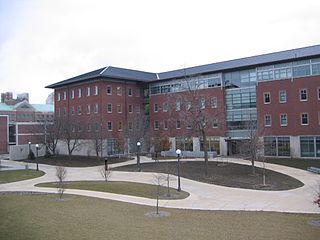
The National Center for Supercomputing Applications (NCSA) is a state-federal partnership to develop and deploy national-scale cyberinfrastructure that advances research, science and engineering based in the United States. NCSA operates as a unit of the University of Illinois Urbana-Champaign, and provides high-performance computing resources to researchers across the country. Support for NCSA comes from the National Science Foundation, the state of Illinois, the University of Illinois, business and industry partners, and other federal agencies.

Champaign is a city in Champaign County, Illinois, United States. The population was 88,302 at the 2020 census. It is the tenth-most populous municipality in Illinois and the fourth most populous city in the state outside the Chicago metropolitan area. It is a principal city of the Champaign–Urbana metropolitan area, which had 236,000 residents in 2020.
The University Corporation for Atmospheric Research (UCAR) is a US nonprofit consortium of more than 100 colleges and universities providing research and training in the atmospheric and related sciences. UCAR manages the National Center for Atmospheric Research (NCAR) and provides additional services to strengthen and support research and education through its community programs. Its headquarters, in Boulder, Colorado, include NCAR's Mesa Laboratory, designed by I.M. Pei.
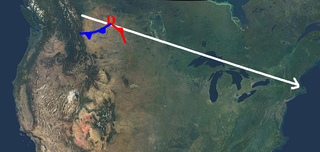
An Alberta clipper, also known as an Alberta low, Alberta cyclone, Alberta lee cyclone, Canadian clipper, or simply clipper, is a fast-moving low-pressure system that originates in or near the Canadian province of Alberta just east of the Rocky Mountains and tracks east-southeastward across southern Canada and the northern United States to the North Atlantic Ocean.
Edward Seidel is an American academic administrator and scientist serving as the president of the University of Wyoming since July 1, 2020. He previously served as the Vice President for Economic Development and Innovation for the University of Illinois System, as well as a Founder Professor in the Department of Physics and a professor in the Department of Astronomy at the University of Illinois at Urbana-Champaign. He was the director of the National Center for Supercomputing Applications at Illinois from 2014 to 2017.
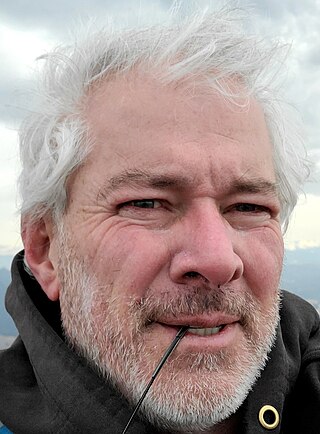
Joshua Michael Aaron Ryder Wurman is an American atmospheric scientist and inventor noted for tornado, tropical cyclone, and weather radar research, the invention of DOW and bistatic radar multiple-Doppler networks.
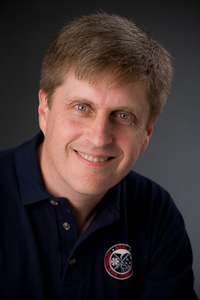
Harold Edward Brooks is an American meteorologist whose research is concentrated on severe convective storms and tornadoes, particularly severe weather climatology, as well as weather forecasting.

The Verification of the Origins of Rotation in Tornadoes Experiment are field experiments that study tornadoes. VORTEX1 was the first time scientists completely researched the entire evolution of a tornado with an array of instrumentation, enabling a greater understanding of the processes involved with tornadogenesis. A violent tornado near Union City, Oklahoma was documented in its entirety by chasers of the Tornado Intercept Project (TIP) in 1973. Their visual observations led to advancement in understanding of tornado structure and life cycles.
Daniel E. Atkins III is the W. K. Kellogg Professor of Community Informatics at University of Michigan.

Roger M. Wakimoto is an atmospheric scientist specializing in research on mesoscale meteorology, particularly severe convective storms and radar meteorology. A former director of the National Center for Atmospheric Research (NCAR), Wakimoto in November 2012 was appointed as assistant director of the Directorate for Geosciences (GEO) of the National Science Foundation (NSF).
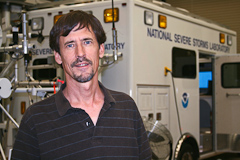
Erik Nels Rasmussen is an American meteorologist and leading expert on mesoscale meteorology, severe convective storms, forecasting of storms, and tornadogenesis. He was the field coordinator of the first of the VORTEX projects in 1994-1995 and a lead principal investigator for VORTEX2 from 2009-2010 and VORTEX-SE from 2016-2017, as well as involved in other smaller VORTEX offshoots and many field projects.
Jeffrey W. Frame is an American atmospheric scientist and professor at the University of Illinois at Urbana-Champaign. He is known for observational and modeling studies of severe convective storms and for teaching meteorology. He was a scientist for VORTEX2 and other field research programs.
Lawrence Rauchwerger is an American computer scientist noted for his research in parallel computing, compilers, and computer architecture. He is a speaker in the ACM Distinguished Speakers Program and the deputy director of the Institute of Applied Mathematics and Computational Sciences at Texas A&M University. He is the co-director of the Parasol Lab and manages the lab's software and systems group.
Vikram Adve is the Donald B. Gillies professor in the Department of Computer Science and a Professor in Electrical and Computer Engineering at the University of Illinois at Urbana-Champaign.

Timothy Laurence Killeen is a British and American geophysicist, space physicist, professor, and university administrator. Killeen took office as the president of the University of Illinois system in 2015. He has been the principal investigator on research projects for NASA and the National Science Foundation. Killeen has authored more than 150 publications in peer-reviewed journals as well as more than 300 other publications and papers. He has served on various White House committees and task forces and is a past editor-in-chief of the Journal of Atmospheric and Solar-Terrestrial Physics.

Kelvin Kay Droegemeier is an American research meteorologist, most recently having served as director of the White House Office of Science and Technology Policy. Droegemeier is known for his research in predicting the development of extreme weather events, and previously served as Oklahoma Secretary of Science and Technology and the vice president for research at the University of Oklahoma. He currently is serving as a professor and special advisor to the chancellor for science and policy at the University of Illinois Urbana-Champaign.
Gabrielle D. Allen is a British and American computational astrophysicist known for her work in astrophysical simulations and multi-messenger astronomy, and as one of the original developers of the Cactus Framework for parallel scientific computation. She is a professor of mathematics and statistics at the University of Wyoming.
Xiuling Li is a distinguished electrical and computer engineering professor in the field of nanostructured semiconductor devices. She is currently the Temple Foundation Endowed Professorship No. 3 in Electrical and Computer Engineering and Fellow of the Dow Professor in Chemistry at the University of Texas at Austin. Previously, she was a Donald Biggar Willet Professor in Electrical and Computer Engineering and Interim Director of the Nick Holonyak Jr. Micro and Nanotechnology Laboratory at the University of Illinois at Urbana-Champaign.

Dušan S. Zrnić is an American engineer of Yugoslav origin, head of the Doppler Weather Radar and Remote Sensing Research Group at the National Severe Storms Laboratory (NSSL) as well as assistant professor of electrical engineering and meteorology at the University of Oklahoma in Norman, Oklahoma. His research interests include circuit design, applied mathematics, magnetohydrodynamics, radar signal processing, and systems design.












